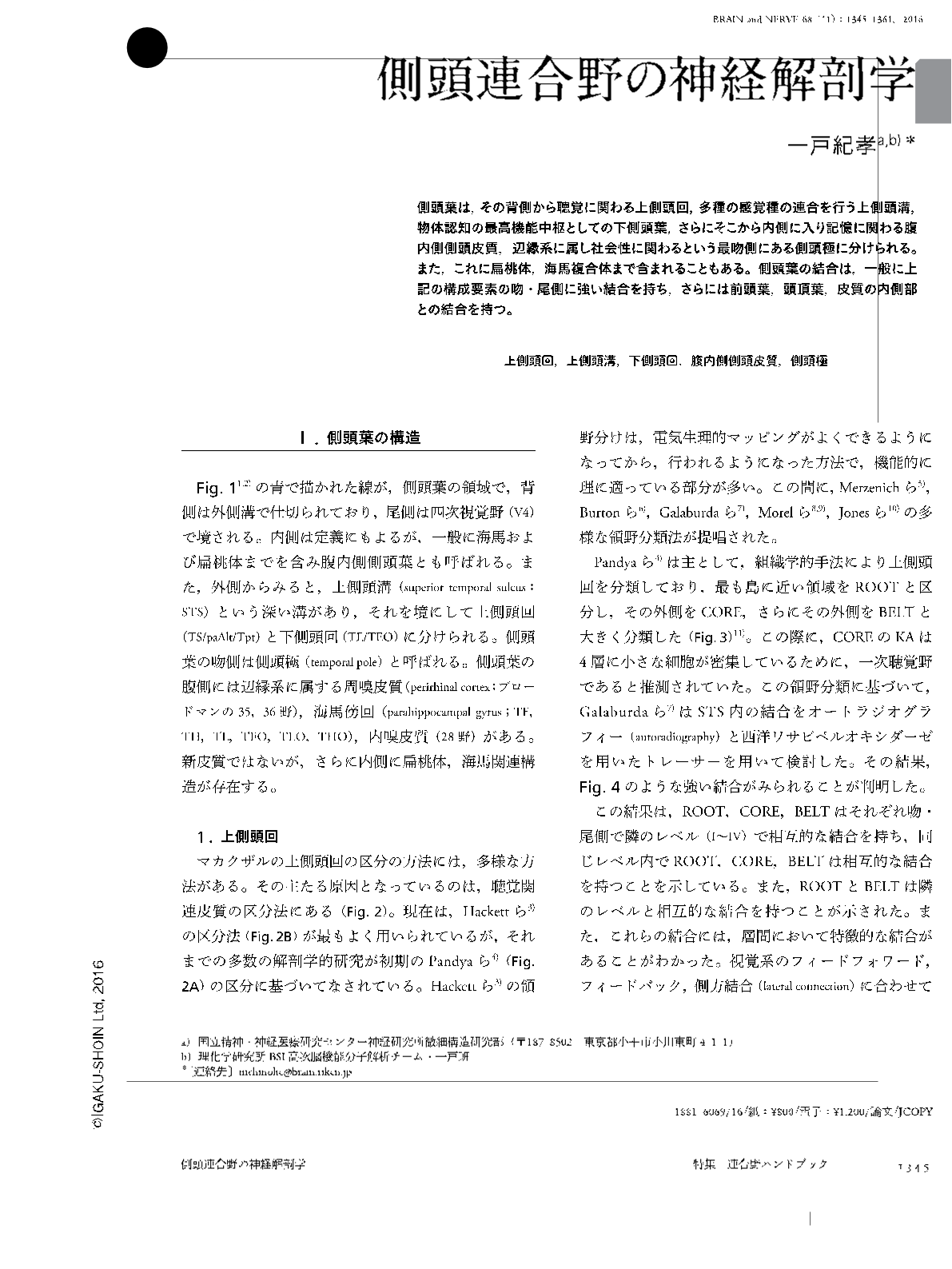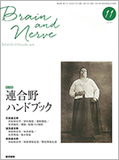Japanese
English
- 有料閲覧
- Abstract 文献概要
- 1ページ目 Look Inside
- 参考文献 Reference
側頭葉は,その背側から聴覚に関わる上側頭回,多種の感覚種の連合を行う上側頭溝,物体認知の最高機能中枢としての下側頭葉,さらにそこから内側に入り記憶に関わる腹内側側頭皮質,辺縁系に属し社会性に関わるという最吻側にある側頭極に分けられる。また,これに扁桃体,海馬複合体まで含まれることもある。側頭葉の結合は,一般に上記の構成要素の吻・尾側に強い結合を持ち,さらには前頭葉,頭頂葉,皮質の内側部との結合を持つ。
Abstract
The temporal lobe of the cerebrum consists of several spatially segregated functional regions. There are discrete regions of the temporal lobe where auditory (primary, secondary and tertiary), visual (motion detection and object recognition) and meta-cognitive (memory and social communication) functions are processed. The subcortical amygdala and hippocampal-complex can also be considered temporal structures. Several nomenclature systems have been promoted over the years resulting in multiple names for most individual gyri and sulci. Herein we review the historical naming systems for cerebral temporal structures and describe their relationship to the functional regions in the temporal lobe. Neuronal populations that process auditory information are located primarily in the medial region of the temporal lobe (the belt and parabelt). The object-recognition prefrontal cortical stream (the “What” pathway) projects through the rostral superior temporal gyrus while the place-related prefrontal cortical stream (the “Where” Pathway) projects through the caudal superior temporal gyrus. The dorsal part of the superior temporal sulcus receives projections from both auditory regions (superior temporal gyrus) and visual processing areas including the motion-recognition related midtemporal area (MT), the fundus of the superior temporal sulcus (FST), and the caudal inferotemporal cortex (TEO). This convergence could be related to dynamic integration of audio-visual information. The ventral part of the superior temporal sulcus also receives projections from motion-detection regions as well as object recognition areas (TE, TEO). This area could be involved in interpretation of dynamic moving objects, especially biological motion.

Copyright © 2016, Igaku-Shoin Ltd. All rights reserved.


